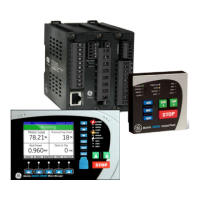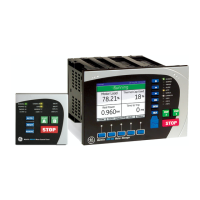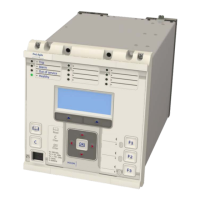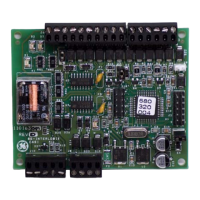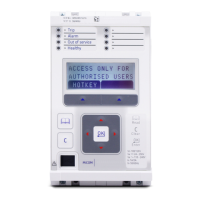3 POWER SWING BLOCKING
A power swing may cause the impedance presented to the distance function to move away from the normal load
area and into one or more of its tripping zones. Stable power swings should not cause the distance protection to
trip. Therefore, if the power swing is deemed to be stable, the distance protection function for the zone in question
is blocked. Unstable power swings should result in either tripping of the relevant protection element, or a system
split. Therefore, the distance protection element should also be blocked for unstable power swings if there is a
strategy for a controlled system split.
3.1
POWER SWING DETECTION
There are two power swing detection modes: Advanced and Conventional. You can set this with the Power
Swing Mode setting.
Advanced mode provides 'settings-free' operation. This uses a superimposed current technique (also known as a
delta technique). This technique is suitable for power swings in the normal to fast frequency range (>0.5Hz)
To detect slower power swings (<0.5Hz), a supplementary technique based on impedance characteristics is used.
This so called slow swing technique will invoke the power swing blocking function should the power swing be to
slow for the delta technique to operate. The impedance method uses zone 7 and zone 8 concentric quadrilateral
impedance characteristics. Power swing detection is achieved by measuring the time taken for the impedance
trajectory to cross through zone 8 into zone 7 (delta Z). In conventional mode, the impedance method is used
for all power swings.
Once a power swing is detected the following actions occur:
● Relevant distance elements are blocked (if blocking is enabled).
● All zones are switched to self-polarised mho characteristics with 10% offset reach for maximum stability
during the swing.
3.1.1
SETTINGS-FREE POWER SWING DETECTION
By "Settings-Free", we mean that there is no need to define any characteristic criteria. The only settings needed are
to define what to do in the event of a power swing (Allow trip, block, or unblock with a delay).
The settings-free power swing detection technique uses a superimposed current detector (DI), as used in the phase
selector. For each phase loop (A-B, B-C, C-A), the actual measured current is compared with the measured current
from exactly two cycles earlier (present in a 2-cycle FIFO buffer). If there is a difference between the two (DI), this
indicates that something is happening on that current loop.
The superimposed current (DI) is compared with a set threshold (set at 5%In) to produce a switching signal PH1.
This switching signal is used as an input to the power swing blocking function. It also triggers the current sample
values in the 2-cycle FIFO butter to be stored in memory for further current comparisons.
Superimposed currents appear during both fault conditions, and power swings. For fault conditions, superimposed
components will not normally extend beyond two cycles. Under power swing conditions however, superimposed
components persist beyond two cycles. We can use this fact to differentiate between faults and power swings.
During a power swing (in the absence of a fault), the phase selector will indicate a three-phase selection, or a
phase-phase selection if one pole is dead. So if superimposed components persist for three cycles, and a “faulted-
phase” indication of “three-phase with one pole dead” is present during those three cycles, a power swing has
been detected and the relevant signals are asserted.
After a power swing condition has been detected, the DI threshold used by the phase selector is increased and the
current values present in the two cycle buffer are stored. This provides coverage for faults that might occur whilst
a power swing is in progress.
For a fault condition, the superimposed current detector should reset after two cycles, because once the fault
current values enter the FIFO buffer, this will be compared with the present fault current and the superimposed
current will return to zero. This will allow the power swing detection function to reset.
Chapter 10 - Power Swing Functions P543i/P545i
272 P54x1i-TM-EN-1
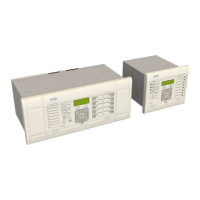
